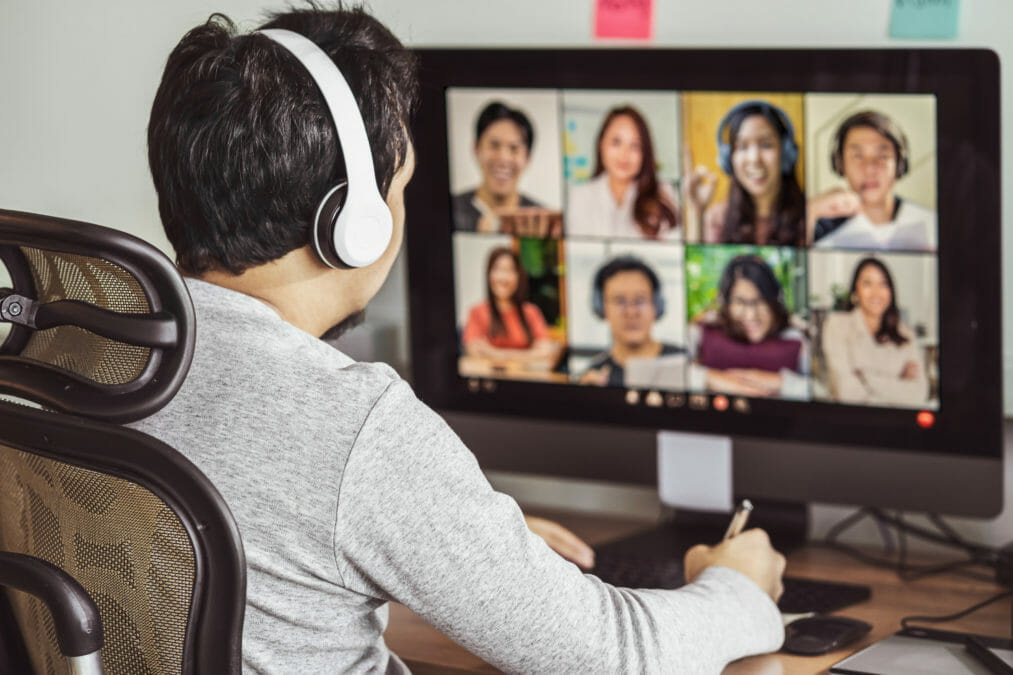The digital normal is here — Covid-19 has shaken companies in virtually every way, not only do businesses face economic, demographic, and societal changes that are fundamentally shifting employee engagement, but the gap between what leaders say and what they mean is more conspicuous than ever. Once a luxury that “couldn’t possibly work on a broad scale,” the opportunity for remote work has now become standard.
As leaders try to navigate this change, there is extensive discussion about what they can do to maintain their culture and ensure transparency remains high. Some companies serve as excellent models for providing insights and best practices for building workplace culture, driving employee engagement, and creating a differentiated employee experience that leads to better business outcomes. Let’s take a look at how two of the best — Starbucks and Salesforce — are achieving these goals by reshaping the use of digital technology:
Starbucks
Starbucks committed to the employee experience first by offering $10 million to its Global Partner Emergency Relief Fund (GPERF). This program allowed workers to apply for grants to support them through the pandemic’s extreme hardship, if necessary.
Then, the company expanded mental health benefits to employees working 20 or more hours a week. This expansion made workers eligible for 20 free therapy sessions per year through Lyra Health.
Although Starbucks employees can receive mental health therapy through in-person sessions, the plan also allowed workers to use video sessions (telehealth) if desired. Workers also had the option to use self-guided programs. The company had previously made mental health training available through the popular meditation app, Headspace.
Support for telehealth and related technologies has grown since Starbucks made this move during the first months of the pandemic. The Centers for Disease Control and Prevention now acknowledges that telehealth policy changes “might continue to support increased care access during and after the pandemic.” By providing these digital options early, Starbucks helped normalize their use and enabled workers to feel valued.
Salesforce
Before the pandemic, Salesforce had already invested in improving employee experience. They spent $8.7 million over three years to address differences in pay across gender, race, and ethnicity. As a software company, they have never been strangers to using technology to support workers. Not surprisingly, they have been named one of the World’s Best Workplaces four years in a row.
When the pandemic hit, Salesforce continued to use technology to keep workers satisfied. To start, they upped transparency standards in communications by hosting weekly, companywide calls to provide employees with information. They also delivered a daily update and news email. Additionally, they conducted wellbeing surveys every month and then published the results so that everyone could see what was going on within the company.
Next, Salesforce extended benefits to include online and in-person education and tutoring. They introduced webinars with leading experts and launched Work.com to help communities reopen safely. The company developed a workspace called Concierge to allow employees to resolve problems and increase productivity through self-service.
To ensure workers had fun and felt connected, they held a talent show and hosted a bring-your-kids-to-work event with story-time, crafts, yoga, and more. Finally, Salesforce honored tenured employees virtually through Koa Konnect.
Given their sector, Salesforce might have been better positioned than other businesses to implement many of these digital strategies. But they demonstrate that leadership can keep workers feeling happy and included when the right tools are available.
Digital transformation can be at the heart of a great worker experience
As the pandemic continues, it’s evident that it has dramatically increased the rate of digital transformation, advancing technological adoption by several years rather than weeks or months. Businesses mustn’t leave workers behind as they try to make these rapid adjustments. Leaders should be incredibly optimistic. They have an excellent opportunity to use the technological shifts that are part of their digital transformation to deliver a better, more positive employee experience.
According to Salesforce, employees are facing a new reality in this changing world. It has “become a digital-first, work-from-anywhere environment that has impacted the way each of us collaborates, communicates, and gets support. Investing in employee experience is no longer a choice but a requirement for any company that wants to thrive.” Although there has always been a need for community building and collaboration within teams, leaders must now think more critically about achieving this in a virtual world.
Once you know which technologies make sense for your team, you will further support the employee experience by living your company’s values, being an engaging role model, and holding other people accountable for creating a genuinely open and inclusive culture.

Written by Priya Merchant, digital transformation leader, Genpact — opinions expressed are her own







